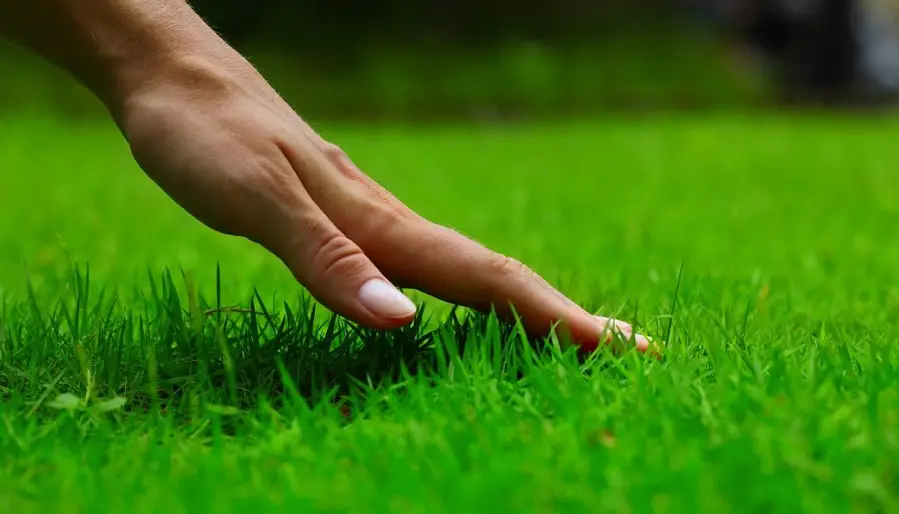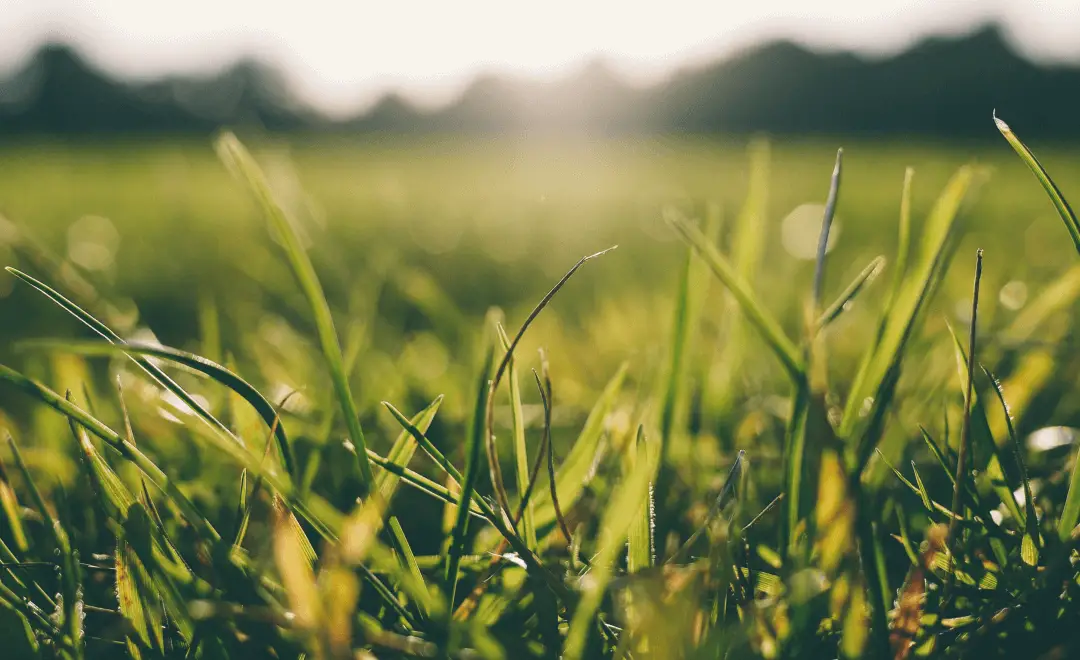Signs That Your Lawn Needs To Be Fertilized
All living things need food or nutrients to sustain life, and your lawn grass is no different. You can think of fertilizer as food for your grass, and if your lawn is not fed sufficiently, you may start to see tell-tale signs that a bit of TLC is in order. Any good lawn care plan should incorporate regular de-weeding, watering, cutting, edging and fertilizationif the latter is lacking, you could see increased weed growth, droopiness and discoloration or browning of your grass, the increased presence of patchy spots, or even places where the lawn is bare.
Creating a schedule to feed or fertilize your lawn, and using the right fertilizer for the specific type of grass that your lawn is home to, can go a long way in bringing your lackluster lawn back to life.
Morning Afternoon Or Evening
The best time of day to fertilize your lawn is actually in the late afternoon or early evening! Why? Well, there are a few reasons.
First, the temperature is cooler, which means the fertilizer wont burn your lawn. Second, theres less wind in the evenings, so the fertilizer will stay put on your lawn instead of blowing away.
Of course, you can also fertilize your lawn in the morning. But if you have the choice, late afternoons or evenings are always better. Your lawn will thank you for it!
Best Time Of Day To Fertilize The Lawn
So, when is the best time of day to fertilise your lawn? Ideally, youll want to be fertilising your lawn in the late afternoon to early evening. If you are applying fertiliser in direct heat and sunlight, then you may cause the grass to burn.
And remember, more is not better. You must apply your fertiliser sparingly using a spreader to ensure that you are providing an even application so as not to burn your lawn.
Read Also: How Much Should Lawn Aeration Cost
Best Time To Fertilize Your Lawn
Spring means more daylight and warmer temperatures. After a cold winter, this is the weather your grass is craving. If youre unsure of exactly when to lay down your first feeding, you can base it off of the temperature. Ideally, the ground should be around 55 degrees Fahrenheit. Depending on where you live, March to April is the best time to fertilize your lawn. Its also best if your yard is watered a few days before you want to apply the fertilizer, whether thats from rain or a sprinkler.
Fertilizer provides your grass with extra nutrients that help to prevent crabgrass and allow it to grow green and thick. To ensure youre laying the feed correctly, start around the perimeter of your lawn. Then, you can start filling in the middle. Similar to mowing your yard, you should go back and forth in straight lines. And you should always use a lawn spreader instead of your hands to complete the job.
Now that you know that spring is the best time to fertilize your lawn, here are some other helpful tips that will keep your grass thriving.
Apply Grass Fertilizer Correctly

Now you’re ready to apply. Feeding the lawn is as simple as mowing it, and as easy as walking at your normal steady pace. Just follow these guidelines for easy application and even coverage.
If youre using a broadcast spreader, feed the entire perimeter of your lawn first. Engage the side-shield, which blocks off one side of the spreader to keep the product on the lawn and out of gardening beds and off driveways and sidewalks. Next, fill in the middle by turning off the side-shield feature and walking back and forth in straight lines. To get even coverage, overlap slightly on each pass by moving over 2 steps before you begin the pass.
When using a drop spreader, start by applying 2 header strips at opposite ends of the lawn to create a turning area. Next, fill in the rest of the lawn by applying the fertilizer back and forth in straight lines perpendicular to your header strips. To ensure you get even coverage, be sure to overlap the wheel tracks by about half a foot .
After youve finished feeding your lawn, return any unused product to the bag and store it for future use.
Don’t Miss: When To Apply Weed Killer To Your Lawn
When Is The Best Time To Fertilize Your Lawn In Florida
A lawn is great to look at, but its a science to maintain! Our clients have a lot of questions about how to keep their lawns green and healthy and there are a lot of factors that go into what looks like a simple green carpet. Theres the grass type, the watering amount and schedule, the mowing requirements, pest problems, reseeding/replanting, and, of coursefertilizing.
We have many years of experience working with our clients to keep their lawns looking beautiful let’s talk about the best time to fertilize your Florida panhandle turfgrass.
The More You Know The More Your Grass Will Grow Here Are The Best Ways To Maximize Your Lawn Fertilization Schedule
Understanding when and how to fertilize your lawn is a major component to maintaining a healthy, lush yard. Fertilizers give your lawn a healthier root system while eating up unhealthy nutrients. With some simple steps, youll be on your way to having a lawn that is the envy of the neighborhood.
Read Also: What Do You Use To Aerate Your Lawn
Why You Should Fertilize Your Lawn
Nitrogen is what gives your lawn a good green color. It also reduces weed problems which helps to give the turf a uniform appearance. Fertilizers are labeled with an NPK ratio which tells you what percentages of nitrogen , phosphorous and potassium , are used to create a particular formula. A soil sample taken to your local agriculture extension office can tell whether phosphorous and potassium levels are sufficient. If they are, your lawn probably won’t need those amendments for several years. Nitrogen, the main ingredient for promoting good growth and color should be applied annually.
Should You Fertilize Your Lawn
There are many things to consider before answering this question. Not everyone’s goals and circumstances are the same. So the answer will vary from individual to individual.
If you want a great-looking lawn, and if you have the time, energy, and money to achieve that objective, then the answer is unequivocally yes. Proper fertilization is one factor that can make one lawn in the neighborhood stand out above the rest. Which brings us to the question, How often should you fertilize your lawn? Because, if you truly care about showcasing your lawn, you will want to fertilize it more than someone who is content with a patchy lawn. For the ultimate manicured lawn, you should fertilize it two or three times per year.
But not everyone needs a lush lawn. There are homeowners who value low maintenance over having the showiest lawn on the block. There are some homeowners who are organic gardeners, who shy away from using chemical fertilizers. Homemade compost can be applied to a lawn, instead, but there is work involved in making compost. Gardeners may value what compost is available too highly to waste it on lawns rather than on vegetable gardens. And there are some who simply hold lawns in low esteem for them, grass-covered areas are utilitarian, functioning merely as spaces for walking from point A to point B in the landscape.
Read Also: How Much Does Weekly Lawn Mowing Cost
Check The Soil Temperature
Typically, the best time to fertilize your lawn is in the spring. Around this time, the soil temperature reaches around 55 degrees. At this temperature, the grass moves from a dormant winter phase into a growing phase.
The time at which your soil reaches this temperature can vary a lot depending on the local climate. Using a soil thermometer can help you identify the best time to fertilize your lawn.
Synthetic Vs Organic Fertilizers
Synthetic and organic fertilizers contain the same key ingredients . The only difference is that those ingredients are man-made in the former and extracted from organic materials in the latter.
The main difference with application is that organic lawn fertilizer tends to contain a lower density of those ingredients than synthetic versions, so you might need a higher volume of fertilizer to provide the same benefit to your lawn.
Read Also: What Is The Best Lawn Fungus Control
Dont: Forget About Pests
While fertilizer is important for lawn care, its not the only thing you need to worry about. Pests can also do a number on your lawn, so be sure to keep an eye out for them.
Common lawn pests include grubs, lawn moles, and chinch bugs. These pests can damage your lawn by eating the grassroots or damaging the blades of grass. If you suspect you have a pest problem, be sure to contact your local lawn care experts for help.
When To Use Compost

Compost does more than feed grass it also builds and feeds soil. Compost contains microorganisms, micronutrients and organic matter items that nourish soil and foster a healthy underground environment in your lawn. When should you use compost? Spread a thin layer over lawns in early spring to fuel strong growth. Any time you plan to aerate, spread compost after aerating to improve soil and give roots a boost. It’s also a good idea to apply compost before overseeding thin turf. Add compost to a lawn by the shovelful in several places.
Also Check: How To Treat Your Lawn In The Summer
The Best Time To Fertilize And When To Avoid It
If you’re wondering the best time to fertilize, remember it’s just as important to know when not to do it.
In the Florida panhandle, grasses tend to be more dormant in the winter months. During winter, the grass isnt as able to take in the needed nutrients, so it make sense to avoid applying fertilizers at this time.
Hold off on fertilizing if your area is expecting heavy rains of two or more inches, or a tropical storm is expected in the next 24 hours. You want to make sure the fertilizer has a chance to get into the soil and root systems, not get washed away.
Also, if you just planted new turfgrass, the University of Florida Extension recommends waiting 30 to 60 days before using nitrogen fertilizer. The young roots arent deep enough to really absorb the nutrients, and the soil from the sod farm may already have nutrients in place.
When Is The Best Time Of Year To Fertilize Lawn Grass
Video Playback Not Supported
Whether to fertilize your lawn in the fall or spring depends on your climate and the type of grass in your yard.
- Fall is a great time to fertilize cool season grasses, like fescue and rye, since its the peak of their growing season.
- Warm season grasses, such as St. Augustine and centipede, should be fertilized in the spring, since they go dormant in the winter.
Fall is a good time of year to aerate your lawn, since you can add lime or compost at the same time to give your grass a head start in spring.
Watch this video to find out more.
Also Check: How Much Does It Cost To Put New Lawn
Why Use Organic Fertilizer
Organic lawn fertilizer provides vitamins and minerals that your lawn uses to stay lush and green. This specialized variety of fertilizer might include animal proteins derived from processed animal products or waste, potash, seaweed, manure, compost and corn gluten meal.
Organic lawn fertilizer applied two to three times a year can take the place of many artificial treatments depending on the nutrient requirements of your lawn. It is important to remember that fertilizing is only one component of sound maintenance practices for a healthier lawn.
Why Fertilizer Is Important For Your Lawn
Fertilizer provides your lawn with the nutrients that it needs to flourish and thrive. The better the soil that houses your homes grass lawn is, the more rich, fertilizing nutrients your lawn can benefit from, but if you have not conceived and created your lawn from the get-go, you may not have a lawn that is loaded with self-fertilizing goodness.
Even the best soil tends to lose its potency and fertilizing power over time, so its important to fertilize your lawn to ensure that it will continue to grow at a satisfactory rate, as well as remain healthy and as green as possible for as long as possible during the year.
Recommended Reading: What Month Should You Fertilize Your Lawn
Do: Use The Right Fertilizer
When it comes to lawn fertilizer, not all products are created equal. There are two main types of lawn fertilizer: slow-release and quick-release.
Slow-release lawn fertilizer is released slowly over time, providing a steady stream of nutrients to your lawn. This type of lawn fertilizer is ideal for long-term lawn care, as it helps to promote deep, green growth.
Quick-release lawn fertilizer, on the other hand, is released immediately upon application. While this type of lawn fertilizer can give your lawn a quick boost of nutrients, its not ideal for long-term care. Quick-release lawn fertilizer can also lead to excess growth, which can be difficult to manage.
When choosing a lawn fertilizer, its important to select a product thats right for your lawn care needs. If youre looking for long-term lawn care, slow-release lawn fertilizer is the way to go. For a quick boost of nutrients, quick-release lawn fertilizer can be used.
Use The Right Spreader
When applying lawn fertilizers, always use a lawn spreader. Never spread product by hand! A broadcast spreader with a side-shield feature like the EdgeGuard® feature is great for most lawns. This makes application along the lawn’s perimeter easy by shutting off half the spreader flow, so product is only applied on the lawn and not on non-lawn areas like the driveway, sidewalk, or landscaping. A drop spreader is another option for small spaces because the application area is much narrower. Learn more about which spreader is right your yard .
Fill the spreader hopper with your lawn fertilizer, then set the spreader to the recommended setting listed on the product package. If the product package does not provide a spreader setting, it is not intended for lawn use.
You May Like: What To Look For When Buying An Electric Lawn Mower
When Should I Apply Fertilizer To My Lawns
If you want to ensure that you have green and healthy lawns and plants all year round, watering them and providing them with minerals is not enough. Since plants absorb building blocks such as nitrogen, potassium, and phosphate at different times of their growth cycle, it is essential to know when to apply fertilizersseason and time of day.
How To Apply Fertilizer To Cool

Don’t fertilize a dry lawn. Instead, wait until the day after a rain, when the soil is moist. It’s also best to time your application so there’s at least a few days before the next rain so your fertilizer doesn’t get washed away before it gets absorbed into the soil. Calculate how much fertilizer you’ll need for your lawn. Use a spreader or broadcaster, walking your lawn in a regular pattern to scatter the fertilizer as evenly as possible.
Also Check: What Kills Clover In Your Lawn
What Fertilizer To Use In The Fall
The answer here depends on local ordinances or state laws. Some states do not allow the use of lawn fertilizers that contain phosphorus . Even though phosphorus is critical for root growth during seed and sod establishment and in the fall to assist in root redevelopment, many soils naturally contain phosphorus so its not necessary to apply more.
If you live in a phosphorus-free community, use fertilizers containing readily available nitrogen sources and a fertilizer higher in potassium . This will properly feed your lawn going into winter. Good numbers would be 24-0-12 or 21-0-21.
If you live in a municipality or state where fertilizers containing phosphorus are allowed, this can add another layer of plant health protection to prepare your lawn for a harsh winter. A good example would be 24-5-10 or 20-5-20. A lawn starter fertilizer, such as a 14-14-14 or 12-24-12 would also work.
Liquid or soluble fertilizers containing similar NPK ratios can also be used. However, understand that recommended application rates of sprayable lawn fertilizers will deliver fewer nutrients per application compared to granular products. But, using a hose-end sprayer to apply a fall fertilizer is still an acceptable method of application. You may have to apply two applications a couple of weeks apart to realize its full benefit.
What Is Lawn Fertilizer
Lawn fertilizer is essentially food for your grass. It contains chemicals and compounds that provide your lawn with the nutrients it needs to grow and thrive. On top of that, lawn fertilizer also helps to keep weeds and pests away so your grass can grow in peace.
Lawn fertilizer usually contains three main ingredients: nitrogen, phosphorus and potassium. Depending on the type of grass your lawn is made from and the time of year youre feeding it, the levels of these ingredients can vary from one fertilizer to another.
Nitrogen provides the green color of your lawn and encourages thickness and density in the shoots. Phosphorus is important for stimulating the grass to grow and strengthening the roots. Potassium gets right into the walls of the cells in your grass, making it more resilient against drought and heavy rain.
Don’t Miss: How To Burn Your Lawn